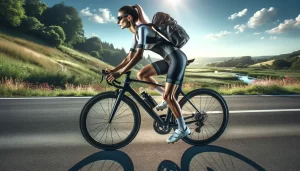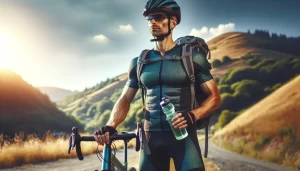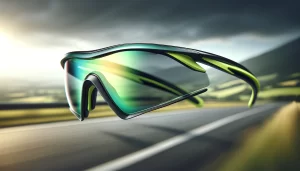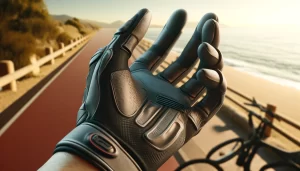Urban cycling is more than just pedaling through city streets; it’s about experiencing the city in its truest form, navigating with agility and assurance. The right accessories for cycling can transform this experience, enhancing both safety and comfort.
Whether you’re commuting to work, running errands, or just enjoying a leisurely ride around town, having the essential gear can make all the difference. It’s not just about making your ride easier—it’s about making it safer, smarter, and more enjoyable.
As you delve into the urban cycling world, you’ll quickly realize the importance of being well-equipped. From the helmet that protects your head to the lights that illuminate your path, each accessory plays a pivotal role.
But with so many options available, choosing the right accessories can seem overwhelming. Don’t worry, this guide is designed to help you understand what you really need and why. So, keep reading to discover how these essential items can elevate your urban cycling adventure, keeping you safe and comfortable while you explore the bustling cityscape.
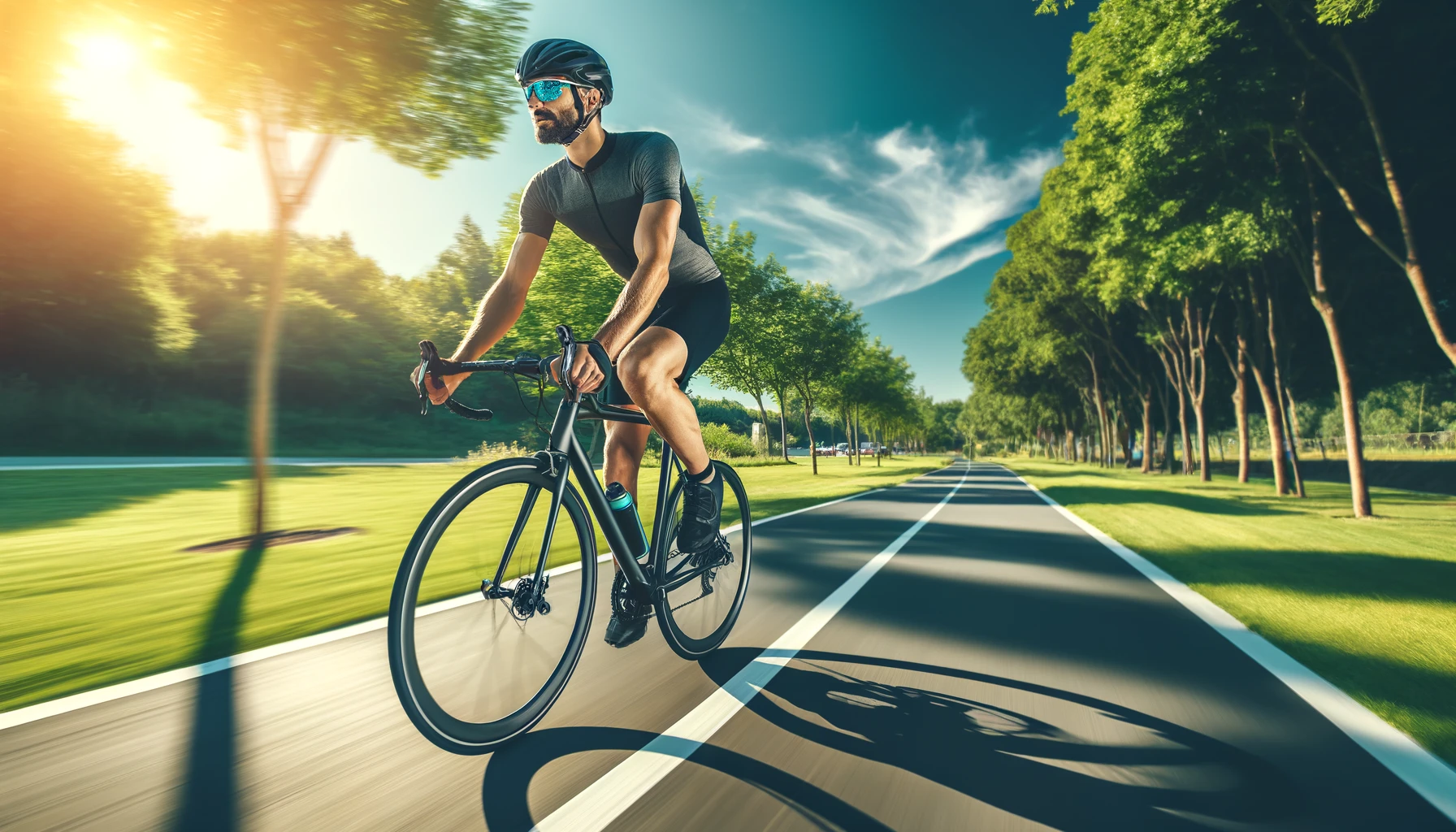
Image Source: Image Generated With DALL-E on ChatGPT
Helmet: Safety First
Wearing a helmet is essential for protecting your head during activities that involve risk, such as cycling, skating, or motorcycle riding. Helmets are designed to absorb impact and reduce the risk of severe head injuries by dispersing the force of a collision.
They come in various sizes and styles, catering to different age groups and preferences. Choosing the right helmet that fits properly and meets safety standards can significantly enhance safety and prevent life-threatening injuries.
Steps to Choose and Use a Helmet Properly:
- Select the Right Size: Measure your head circumference and choose a helmet that fits snugly.
- Look for Safety Certifications: Ensure the helmet meets safety standards such as DOT, Snell, or ANSI.
- Adjust for Comfort: Adjust the straps and padding so that the helmet sits level on your head and does not rock side to side.
- Regular Inspection: Regularly inspect your helmet for cracks or wear and replace it after any significant impact or every five years.
Importance of LED Lights for Bicycles
LED lights are crucial for bicycle safety, especially when riding in low-light conditions or at night. They help make cyclists visible to other road users, reducing the risk of accidents. LED lights are energy-efficient, durable, and offer better visibility compared to traditional bulbs.
They can be easily attached to different parts of the bicycle, such as the front, back, and wheels. Using both front and rear LED lights can significantly improve a cyclist’s visibility from all directions.
Tips for Using LED Lights on Your Bicycle:
- Use Both Front and Rear Lights: Equip your bike with white LED lights at the front and red lights at the rear.
- Maintain Proper Brightness: Choose lights that are bright enough to be seen from a distance but not so bright as to blind other road users.
- Regularly Check Battery Life: Ensure your lights are always charged or have fresh batteries.
- Opt for Multiple Lights: Consider additional lights on your helmet or clothing for increased visibility.
- Keep Them Clean: Regularly clean your lights to maintain maximum brightness and visibility.
Bells and Horns for Traffic Alert
Bicycle bells and horns are critical safety tools that serve as an audible signal to alert pedestrians, drivers, and other cyclists of your presence. This simple device can help prevent collisions and improve traffic flow by providing a clear, courteous way to communicate.
Bells typically produce a ringing sound that is widely recognized as a signal to move or be cautious, while horns might emit a louder beep suitable for noisier environments. Having a reliable bell or horn on your bicycle ensures that you can safely navigate through busy streets and crowded pathways.
Steps to Use Bells and Horns Effectively:
- Choose a Clear Sound: Select a bell or horn that emits a sound that is loud and clear enough to be heard by others.
- Install at Easy Reach: Position your bell or horn where you can easily access it without removing your hands from the handlebars.
- Use Sparingly and Politely: Use your bell or horn only when necessary to alert others, and do it in a manner that is not startling or aggressive.
- Regular Maintenance: Check periodically that your bell or horn is functioning properly and is free from dirt or rust.
Gloves for Cycling: Comfort and Protection
Cycling gloves are designed to provide both comfort and protection for your hands while riding. They help absorb vibrations from the handlebars, reducing the risk of numbness and fatigue during long rides. Gloves also protect your hands from blisters, cuts, and abrasions in case of a fall.
Moreover, they offer better grip in wet conditions, enhancing control and safety. Cycling gloves come in various styles, including fingerless options for warmer weather and insulated versions for cold climates, making them suitable for all seasons.
Tips for Choosing and Using Cycling Gloves:
- Fit is Key: Ensure the gloves fit well; too tight can restrict movement, while too loose can diminish control.
- Material Matters: Select gloves made from breathable, moisture-wicking materials to keep your hands dry and comfortable.
- Padded Palms: Choose gloves with padded palms for extra cushioning, which is beneficial for long rides.
- Seasonal Selection: Opt for fingerless gloves in summer for better ventilation and full-finger gloves in winter for warmth.
- Easy Care: Regularly wash your gloves according to the manufacturer’s instructions to maintain hygiene and durability.
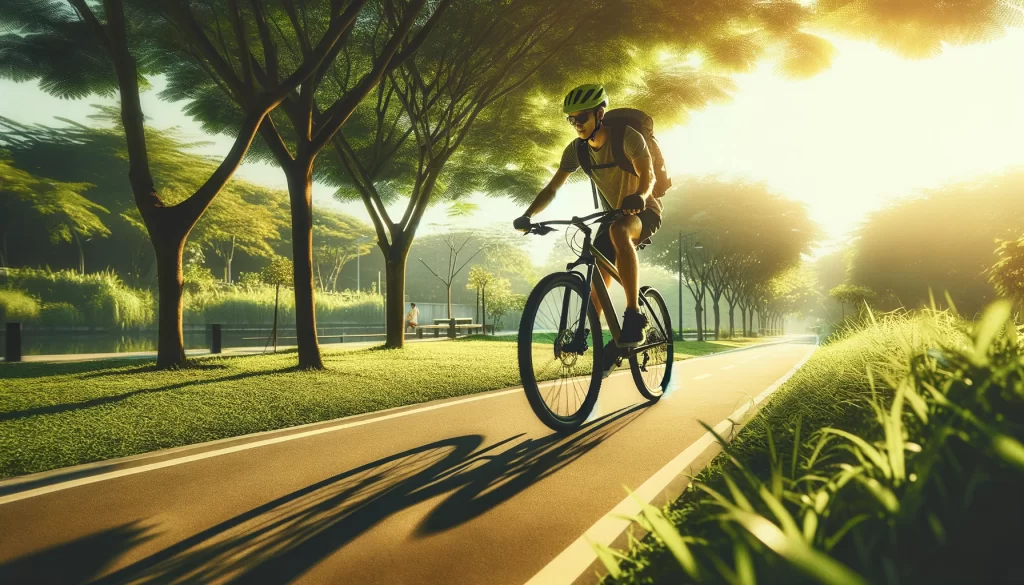
Image Source: Image Generated With DALL-E on ChatGPT
Bags and Backpacks for Urban Cyclists
Urban cyclists often require specialized bags and backpacks that cater to the needs of commuting and city riding. These accessories are designed to offer convenience, ease of access, and protection against the elements while maintaining a balance of comfort and stability during rides.
A good urban cycling backpack or bag should be ergonomic, featuring padded straps and a back panel that promotes airflow, reducing sweat and discomfort. They also typically come with compartments that allow for organized storage of laptops, tools, and personal items, along with reflective elements for increased visibility in low-light conditions.
Moreover, many cycling-specific bags are built with durability and weather resistance in mind. Materials like waterproof fabrics and sealed zippers protect contents from rain and road spray, which is crucial for those who commute regardless of weather conditions. Some models also include detachable rain covers for additional protection.
Features like easy-to-access pockets and U-lock storage make these bags particularly suitable for the urban environment, where convenience and efficiency are paramount. By choosing the right bag, urban cyclists can significantly enhance their commuting experience, ensuring that their belongings stay safe and dry, and they remain comfortable throughout their journey.
Appropriate Tires for Urban Cycling
Choosing the right tires for urban cycling is crucial for safety, comfort, and performance on city streets. The ideal urban bike tire should be robust enough to handle the unpredictability of city roads, which often include potholes, debris, and varying surfaces.
Puncture-resistant tires are highly recommended as they contain a layer of protective material beneath the tread that helps prevent flats from sharp objects. These tires may be slightly heavier than standard tires, but the added weight is a small price to pay for the reduction in the likelihood of tire-related mishaps.
In terms of tire width, wider tires are often preferred for urban cycling because they offer better traction and stability, especially on uneven or slippery surfaces. They also provide a more comfortable ride by absorbing shocks from bumps and holes more effectively than narrower tires.
Generally, tires ranging from about 28mm to 42mm are suitable for most city environments, giving a good balance between speed and comfort. Additionally, tires with a slight tread pattern are advantageous for urban areas as they help manage water on rainy days and offer more grip when it’s needed. By selecting the right tires, urban cyclists can improve their control and enjoyment of their city rides, making their daily commutes both safer and more pleasant.
Pedals and Shoes for Urban Cycling
Urban cycling demands pedals and shoes that combine functionality with comfort, tailored to the unique conditions of city riding. For many urban cyclists, flat pedals work best because they accommodate a wide variety of shoes and allow for quick dismounts at traffic stops—crucial in busy city environments.
These pedals typically feature a broad platform and a grippy surface to keep the foot stable, even on wet days. For those who prefer more efficiency and power in their pedal stroke, clipless pedal systems can be a great choice. These systems connect the shoe directly to the pedal via a cleat, enhancing the cyclist’s control over the bike and enabling a more effective energy transfer.
Cycling shoes for urban riders often blend the performance characteristics of traditional cycling shoes with the comfort and style of casual footwear. They are usually designed to look more like conventional sneakers but come equipped with stiffer soles to improve pedaling efficiency and, in the case of clipless shoes, recessed cleats that make walking easier.
This versatility makes them ideal for urban cyclists who may need to walk part of their commute or run errands on foot. Whether opting for clipless or sticking with flat pedals, choosing the right combination of pedals and shoes can significantly affect comfort, efficiency, and safety in urban cycling.
Multifunctional Tools and Repair Kits
For urban cyclists, being prepared with the right tools and repair kits is essential to handle unexpected breakdowns or adjustments on the go. Multifunctional tools are particularly valuable because they combine several tools in one compact, portable device.
These typically include various sizes of Allen keys, screwdrivers, and wrenches, all necessary for tightening bolts, adjusting seats, and more. Some even feature more specialized tools like chain tools or spoke wrenches, making them indispensable companions for the urban cyclist.
Carrying a basic repair kit is also wise, especially one that includes tire levers, patch kits, and a spare tube. For those using tubeless tires, a tubeless repair kit can be a lifesaver in the event of a puncture. Many cyclists also include a portable hand pump or a CO2 inflator in their kit to deal with flat tires on the road.
Keeping these tools in a small saddle bag or a specific compartment of a cycling backpack ensures they are always on hand when needed. With these tools, urban cyclists can feel more confident and self-reliant, knowing they can tackle most common mechanical issues without needing a bike shop’s help.

Image Source: Image Generated With DALL-E on ChatGPT
Frequently Asked Questions About Essential Accessories for Urban Cycling
What are the must-have safety accessories for urban cycling?
Safety should always be a priority in urban cycling. Essential safety accessories include a well-fitted helmet, bright LED lights for the front and rear of your bike, and reflective clothing or stickers to enhance visibility. A reliable bell or horn for signaling to pedestrians and other road users is also crucial.
How do I choose the right bag for urban cycling?
When selecting a bag for urban cycling, consider factors like waterproofing, comfort, and capacity. Backpacks with padded straps and reflective elements are popular, as are panniers that attach directly to your bike rack, distributing weight more evenly and reducing back strain.
Which tires are best for city bikes?
For city riding, puncture-resistant tires with a width between 28mm and 42mm are ideal. They provide a balance of comfort, efficiency, and durability. Slight tread patterns are recommended to handle wet roads better and offer additional grip.
Should I use flat pedals or clipless pedals for city rides?
The choice between flat and clipless pedals depends on your riding style and comfort preference. Flat pedals work well for those who need to frequently stop and start, while clipless pedals offer better energy transfer and control for those comfortable with the mechanism.
Are there any essential tools I should carry with me on my rides?
Yes, carrying a multifunctional tool and a basic repair kit can save the day if you encounter mechanical issues. These kits should include items like Allen keys, screwdrivers, tire levers, a patch kit, and a portable pump or CO2 inflator.
Urban cycling can be an enriching and eco-friendly way to navigate through the city, but it comes with its own set of challenges. Being prepared with the right accessories can make your ride safer, more comfortable, and more enjoyable.
Essential accessories not only enhance your safety but also ensure that you can handle most common maintenance and emergency situations on your own. As urban cycling continues to grow in popularity, investing in these essentials is an investment in your overall cycling experience, ensuring that each ride is as smooth and hassle-free as possible. By addressing these frequently asked questions, urban cyclists can gear up with confidence and make the most of their city rides.
Did you like the article? Be sure to check out more content like this in the Equipment And Accessories category, or see more related content below.

